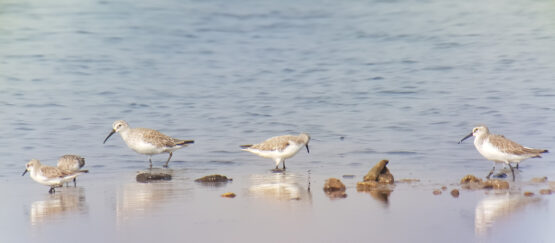Many of Australia’s shorebirds migrate to and from the Northern Hemisphere each year; often staying in the south for up to 6 months. Over the past 50 years, population numbers of most of Australia’s migratory shorebird species have declined as a result of habitat loss and hunting. For unknown reasons, the numbers of some species have recently begun to stabilise.
Finding out why declines appear to have stopped for some species might hold the key to creating management actions that build on these gains, to support and progress real, sustained population recovery. This project will determine survival rates and reproductive output for several shorebird populations, enabling an understanding of which factors might be important for their further recovery. The project will also analyse which conservation actions for shorebirds have been particularly effective, and summarise all of this information in a series of guidelines for managers.

Get involved
The team invites individuals with on-ground experience in shorebird conservation to participate in a short survey. Responses will provide valuable insights into current conservation efforts along the East Asian–Australasian Flyway and will inform the development of a free, practical handbook. At the end of the project, the handbook will be shared with all survey respondents.
To take the survey, please visit this link.
Approach
This project will:
- analyse more than one million shorebird banding and sighting records to create an updatable dashboard of reproductive output and survival parameters for key shorebird populations;
- build a comprehensive database of conservation management actions for migratory shorebirds, indicating those known to benefit reproductive output and survival;
- create a shorebird management handbook to guide practitioner management efforts across Australia and along the East Asian – Australasian Flyway; and
- support many of Australia’s international obligations to conserve wetland and migratory species.
Expected outcomes
- Coastal species and habitats better understood to support regional planning.
- Coastal habitat knowledge expanded to support restoration solutions.
- Habitat values and species pressures assessed and protection needs identified.
- Existing threatened and migratory species monitoring data building knowledge.
Project location
Project leaders
Research partners
The University of Queensland
Deakin University
Collaborators
Australasian Wader Studies Group
Queensland Wader Study Group
Victorian Wader Study Group
Research users
Migratory Species Section
Wetlands Policy Section
Office of the Threatened Species Commissioner
Australian Bird and Bat Banding Scheme
Birdlife Australia
Department of Climate Change, Energy, the Environment and Water
